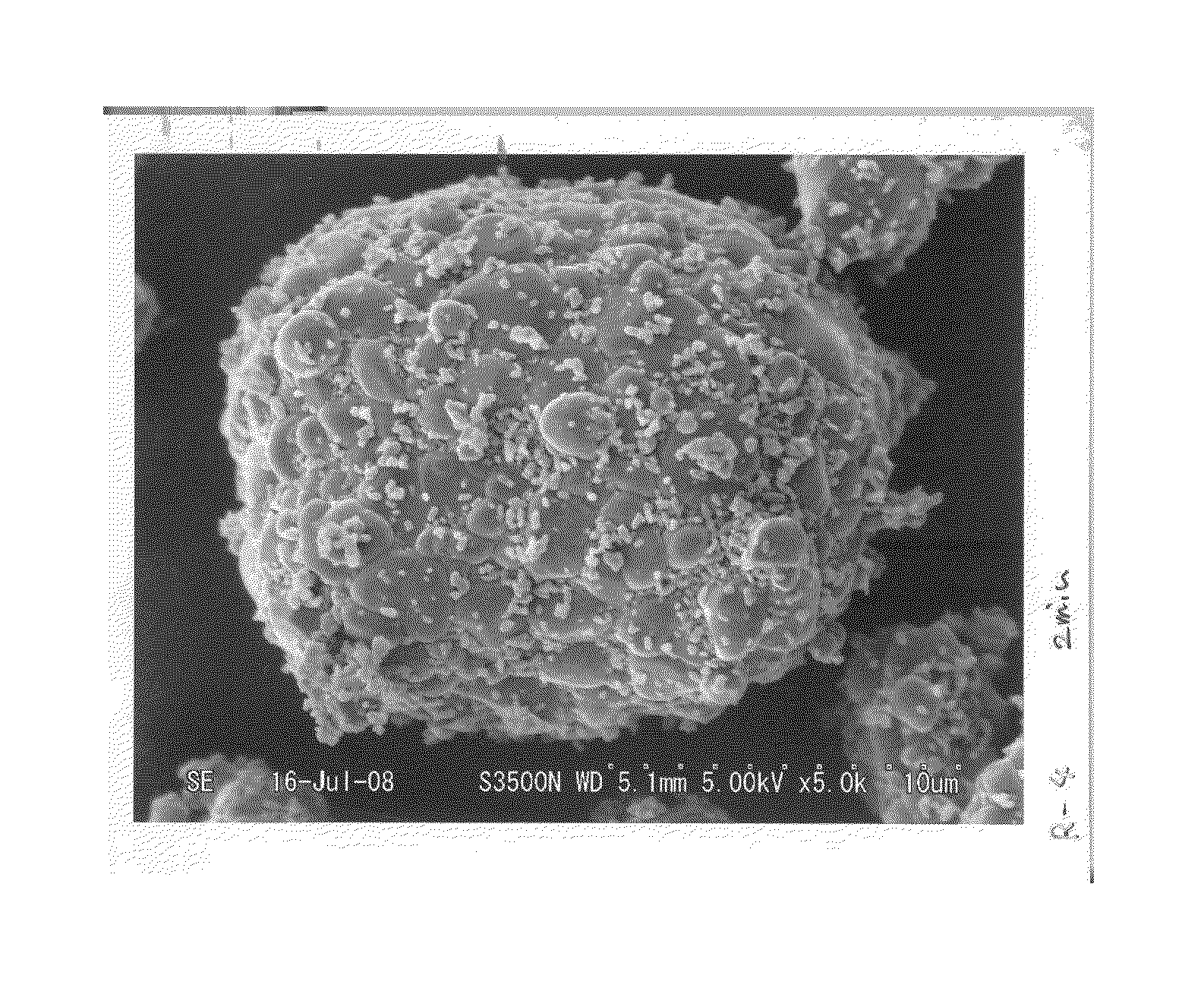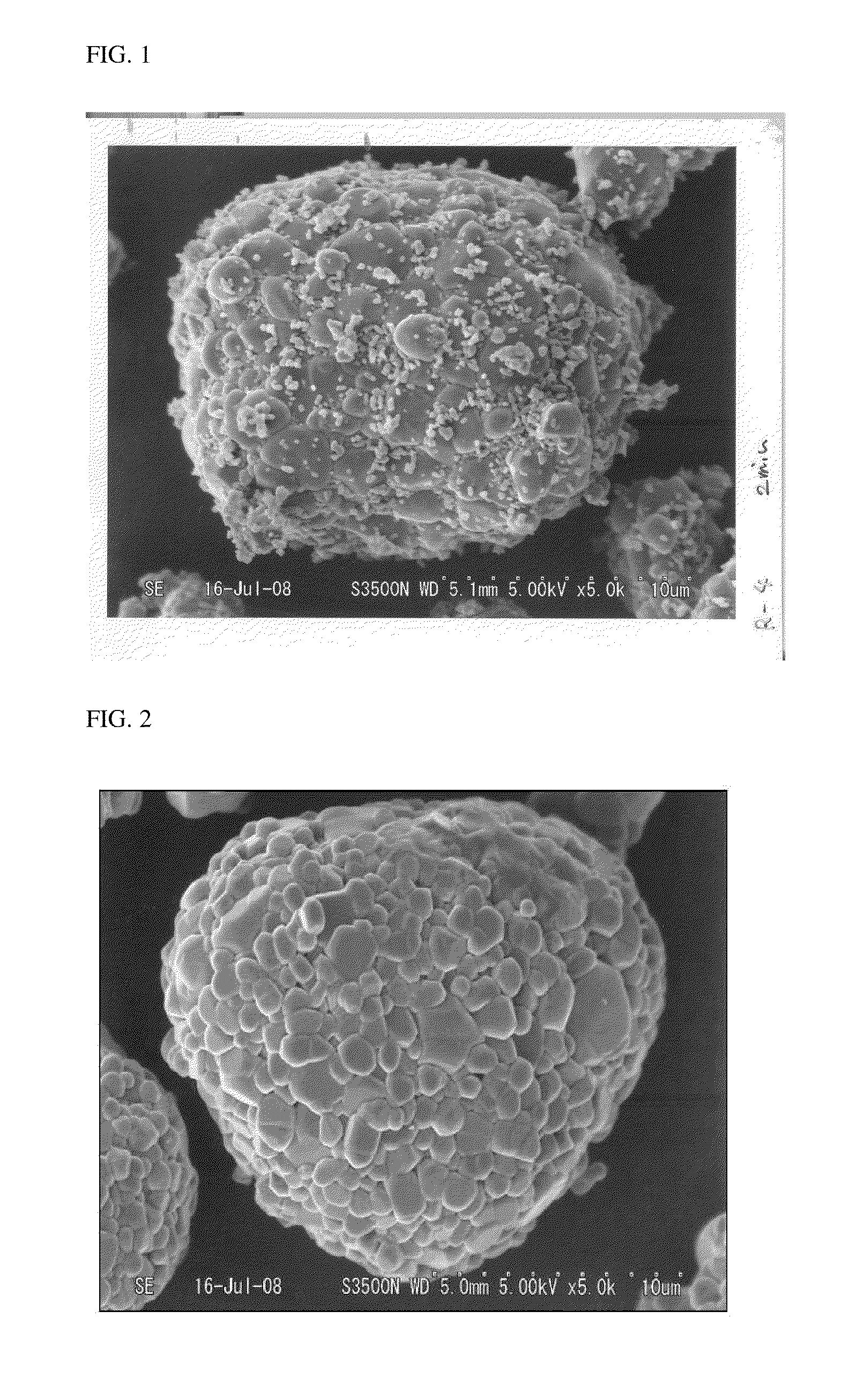Cathode active material for lithium secondary battery
a lithium secondary battery and active material technology, applied in the direction of electric vehicles, cell components, transportation and packaging, etc., can solve the problems of limited large-scale use as a power source for electric vehicles, low safety, high cost, etc., and achieve the effect of favorable enhancement of the rate properties and high temperature stability of the battery, without deterioration in the performance of the battery
- Summary
- Abstract
- Description
- Claims
- Application Information
AI Technical Summary
Benefits of technology
Problems solved by technology
Method used
Image
Examples
example 2
[0080]The same procedure as described in Example 1 was repeated to treat the active material except that a relative weight ratio of LiNi0.53Mn0.27Co0.20O2:carbon:Li3PO4 was 100:1:1.
example 3
[0081]The same procedure as described in Example 1 was repeated to treat the active material except that a relative weight ratio of LiNi0.5Mn0.3Co0.2O2:carbon:Li3PO4 was 100:2:2.
experimental example 1
[0083]For each of the active materials obtained in Example 1 and Comparative Example 1, a surface of the active material was observed through SEM. Observed results of the materials of Example 1 and Comparative Example 1 are shown in FIGS. 1 and 2, respectively.
PUM
| Property | Measurement | Unit |
|---|---|---|
| particle diameter D50 | aaaaa | aaaaa |
| particle diameter D90 | aaaaa | aaaaa |
| particle diameter | aaaaa | aaaaa |
Abstract
Description
Claims
Application Information
 Login to View More
Login to View More - R&D
- Intellectual Property
- Life Sciences
- Materials
- Tech Scout
- Unparalleled Data Quality
- Higher Quality Content
- 60% Fewer Hallucinations
Browse by: Latest US Patents, China's latest patents, Technical Efficacy Thesaurus, Application Domain, Technology Topic, Popular Technical Reports.
© 2025 PatSnap. All rights reserved.Legal|Privacy policy|Modern Slavery Act Transparency Statement|Sitemap|About US| Contact US: help@patsnap.com



